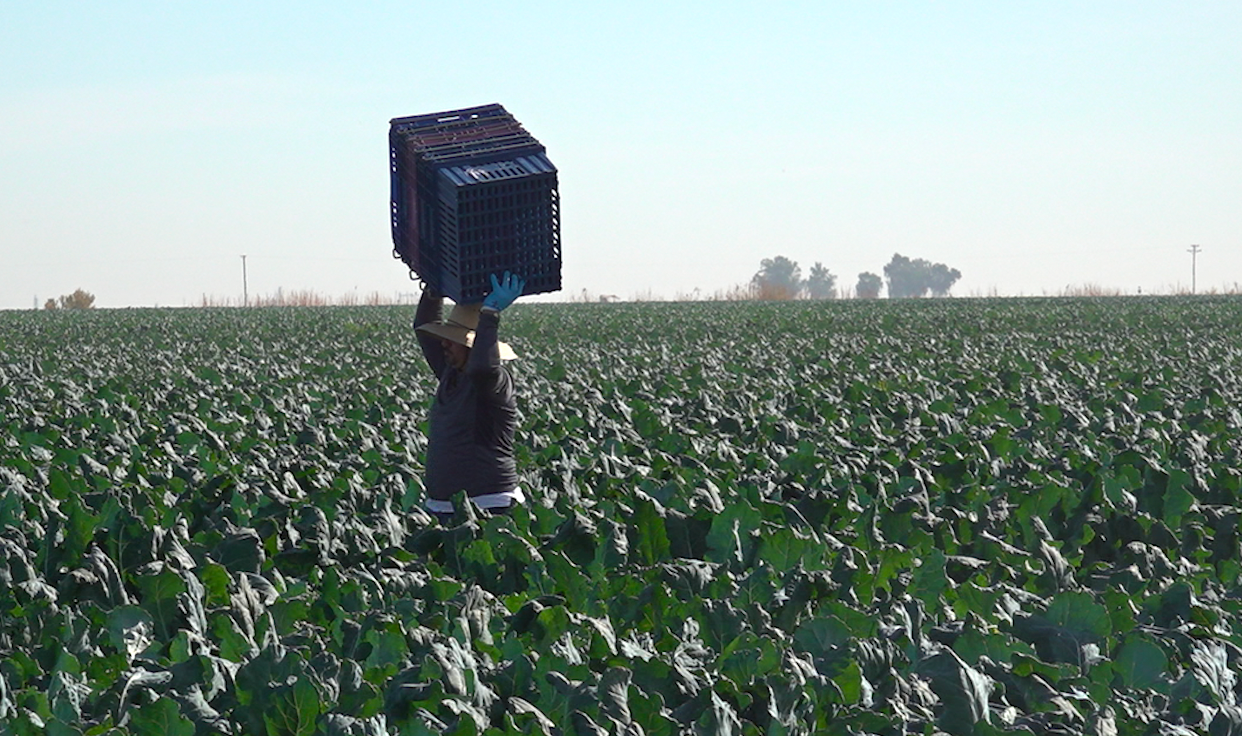
The shrinking of the Colorado River will damage the country's food supply
The shelves and prices at your local grocery store may soon look a little different.
The shelves and prices at your local grocery store may soon look a little different. The Colorado River, which provides water for about 15% of our nation's agriculture, is shrinking, and the current water sharing agreement expires in 2026.
The Imperial Valley in Southern California relies 100% on the Colorado River for its water. Although the valley receives less than three inches of rain per year, it still produces about two-thirds of the country's winter harvest.

A farm worker carries boxes through a field of broccoli. (Sunny Tsai/FOXBusiness)
Farmers in the valley say lowering of the water level and competing interests over the use of the river will adversely affect the country's food supply.
“A lot of people say the Colorado River and the dwindling water supply is a problem that affects 40 million people, because that's who rely on it. I think that number is much lower. I think 100 million people rely on water from the sea. Colorado,” the fourth-generation farmer said. Andrew Leimgruber said.
“When you're between November and March, the vast majority of your lettuce, broccoli, carrots, all your winter greens come from either the Imperial Valley or across the Colorado River from us in Yuma, Arizona,” Leimgruber said.

Leimgruber inspects the sprinklers in the irrigation system. (Sunny Tsai/FOXBusiness)
The Colorado River is divided between seven states and Mexico. Farmers in the Imperial Valley are the biggest users of the river's water.
TEXAS CITY WATER SHORTAGE STRAINS
If the valley is not producing enough, this may be the reason long-term problems.
“So the biggest challenge for us in California is our increased labor costs, but also our ability to withstand pest pressure and things like that. One problem with water scarcity is the lack of diversity in crops. Having that diversity allows us to keep pests under control,” Benson Farms said. manager of Stephen Benson.
US AGRICULTURE INDUSTRY BREAKS FOR FUTURISTIC AERIAL 'DRON WRAP' AFTER FAA DECISION
Because water levels are low, some farmers in the valley are being paid not to grow certain crops or to use less water. But this is not always enough.
“I can say that it doesn't always cover our costs. For example, if I'm going to install drip irrigation, I need $1,000 per acre. I can't come close to that in compensation. There's more to learn because as we go along, conservation gets more expensive,” Benson said.

Workers chop broccoli on a farm. (Sunny Tsai/FOXBusiness)
The Imperial Irrigation District says it works with farmers on a variety of projects water conservation efforts to help with part of the problem.
“We're providing additional funding so they can buy drip systems and sprinkler systems, faucet return systems, all kinds of new technology and precise laser field leveling, so they can continue to farm the way they've always farmed, but just more uses less water,” said Tina Shields, Water Manager for the Imperial Irrigation District.
GET THE FOX BUSINESS BY CLICKING HERE
If the seven states and Mexico fail to agree on how to use Colorado River water by a 2026 deadline, the Bureau of Reclamation will step in and make decisions.
